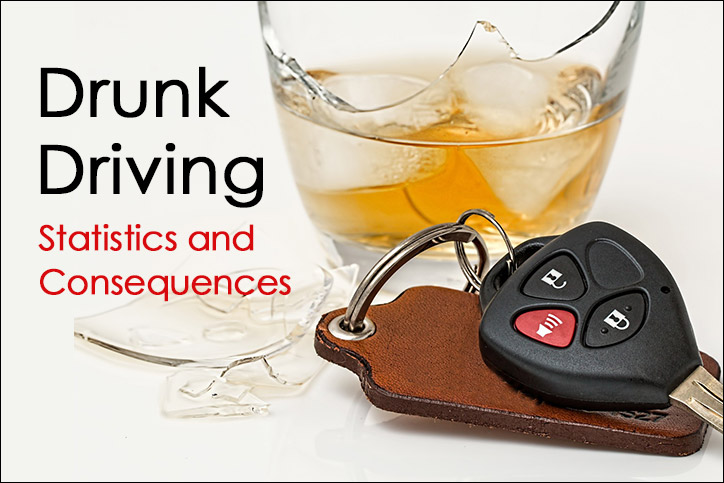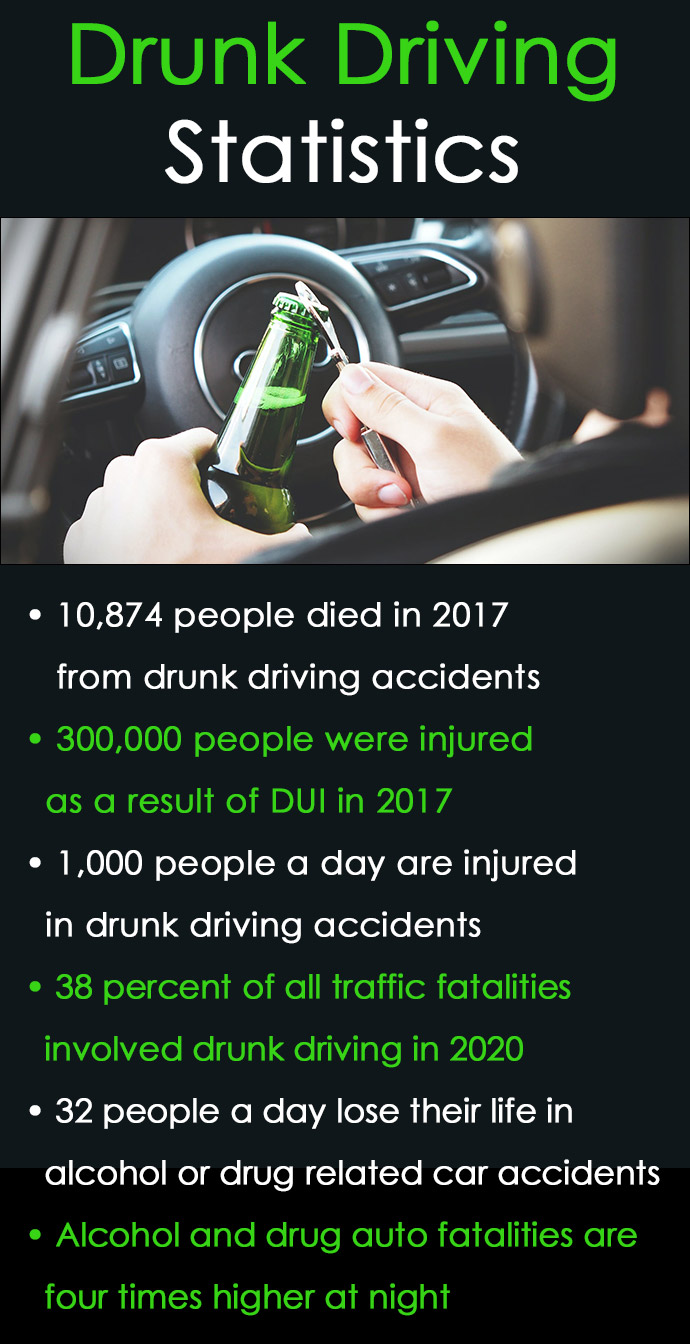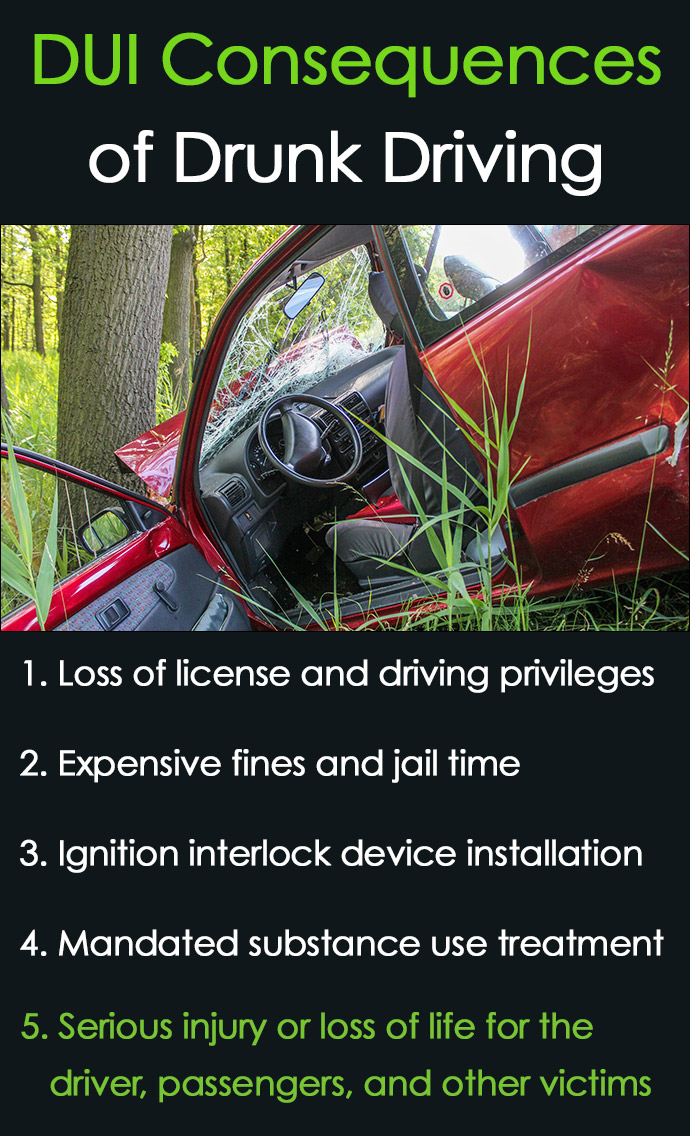Table of Contents
Strategies to reduce impaired driving, such as awareness campaigns and increasing the severity of DUI consequences have shown some improvement in drunk driving statistics since the 1980s, although there’s still a long way to go.
December is designated as National Impaired Driving Prevention Month, a campaign meant to inspire everyone “to promote responsible decision-making and encourage young people to live free of drugs and alcohol.”
In an average year, the National Highway Traffic Safety Administration reports that an estimated 30 million people drive drunk and 10 million drive while under the influence of drugs in the United States.
Driving under the influence of drugs or alcohol can lead to a number of DUI consequences, including serious bodily injury or death to the driver, passengers, and other innocent victims.
What is a DUI or Impaired Driving?
Driving under the influence (DUI) or driving while intoxicated (DWI) is a serious crime.
Impaired driving involves operating a vehicle with a blood alcohol content of 0.08 percent or while under the effects of illegal, recreational, or prescription drugs.
Even a small amount of alcohol or drugs can be incredibly dangerous while driving because a person’s reflexes, reaction times, and ability to think clearly are slowed.
The legal consequences of DUI are very harsh, and for a good reason.
But an often-overlooked aspect of driving while impaired is living with the knowledge, guilt, and shame of having destroyed another person’s life if a serious injury or fatality is involved.
Drunk Driving Statistics
While people are more aware than ever of the consequences of DUI, drunk driving statistics show the dangers of impaired driving are still very real on our roadways.
Mothers Against Drunk Driving (MADD) has compiled a list of troubling drunk driving statistics that illustrate the serious impact of impaired driving.
Some Alarming Drunk Driving Statistics include:
- 10,874 people died in drunk driving accidents (one person every 48 minutes) in 2017, and 300,000 people were injured as a result of DUI
- On average, nearly 1,000 people a day are injured in drunk driving accidents, or 1 person every 90 seconds
- In 2020, drunk driving deaths represented 38 percent of all traffic fatalities, a 2 percent increase from 2019
- Sadly, 32 people a day lose their life as a result of crashes that involve alcohol or drugs
- Data from 2017 shows alcohol and drug involvement in fatal crashes was four times higher at night than during the day
Unfortunately, drunk driving statistics prove that many people are not only putting themselves in danger, but are risking the lives of those they share the roads and sidewalks with, including pedestrians and innocent children.
Perhaps one of the starkest drunk driving statistics reported by Mothers Against Drunk Driving is that 2 out of every 3 people will be impacted by drunk driving in their lifetime.
DUI Consequences
The legal penalties for drunk driving and DUI consequences vary from state to state.
Most states offer some leeway for first time offenses, with some charging DUI as a misdemeanor.
That charge my be dependent on other actions, such as mandatory substance abuse treatment or involvement in alcohol or drug-related recovery programs.
5 DUI Consequences From Drunk Driving
1. Loss or Suspension of Driving Privileges
In most states, a person convicted of DUI can have their license suspended or revoked by the state’s department of motor vehicles.
First offenders may see a suspension of their license for 90 days with the length of suspension growing for subsequent convictions.
Additionally, some states suspend a person’s license if they refuse to take a chemical test after being stopped for suspected impaired driving.
2. Expensive Fines and Jail Time
Jail time for impaired or drunk driving varies from state to state.
For first offenses that do not involve other aggravating factors, six months is about the longest a person will spend in jail.
However, felony DUI that involves injury or the loss of life can see a person sentenced to years in prison.
Fines for a DUI can range from $1,000 to $25,000 depending on the state, but that doesn’t include the skyrocketing cost of car insurance for those who have a drunk driving conviction on their record.
3. Ignition Interlock Device Installation
Some states will order an ignition interlock device be installed on the driver’s vehicle. These devices require a person to blow into a unit installed on the vehicle’s dashboard that can detect a person’s blood alcohol level.
If a person shows any signs of alcohol, the vehicle will not start and, in some cases that information will be available to authorities.
4. Mandated Substance Abuse Treatment
Court ordered drug and alcohol addiction treatment in some states may be required for a first DUI offense.
These programs can range from 30 to 90 days and be in either an outpatient or inpatient setting. In some cases, the program is meant to treat alcohol or drug addiction, while in others, it’s meant to assess whether or not a person is battling addiction issues.
These programs are also sometimes combined with community service and fines related to restitution.
5. Injury and Loss of Life
While the legal punishment for a drunk driving accident involving serious injury and death is harsh, there is also no end to the emotional consequences.
Not only will a DUI driver who survived a crash that killed another person carry the burden of that knowledge, they will also be responsible for a lifetime of trauma caused to the victim and their family.
Drunk Driving Prevention Strategies
Strategies to reduce impaired driving, especially around the holidays, have shown to be effective in reducing the number of DUI-related crashes.
There is a growing list of effective DUI prevention strategies that have been implemented over the years.
5 Drunk Driving Prevention Approaches Include:
1. Strict Drunk Driving Laws
Strict drunk driving laws have made it illegal in every state to drive with a blood alcohol content of 0.08 percent or higher.
For those under the age of 21, having any measurable amount of alcohol in the system is illegal.
2. Awareness Events and Instructional Programs
Drunk driving programs and awareness campaigns that educate the public have shown to be effective for reducing the number of drunk driving accidents on roadways.
National Impaired Driving Prevention Month in December is one type of awareness campaign recognized every year during the holidays.
These strategies are often most effective where it concerns students, both those who are nearing the age where they will be driving. and college-aged students who may be at greater risk of driving while impaired.
3. Alcohol Screening and Intervention Programs
Alcohol problem assessment and treatment programs can be effective for those who are arrested for drunk driving, often after a first offense.
Screening programs take advantage of “teachable moments” after a DUI-related arrest and can help identify people at risk of developing substance abuse and addiction issues.
Data shows that alcohol treatment programs are most effective when combined with other legal sanctions and when offenders are closely monitored for a period of time.
4. Sobriety Checkpoints
Sobriety Checkpoints located in highly trafficked and visible areas have shown to be a deterrent to impaired or drunk driving.
The checkpoints are often announced ahead of time so drivers will know police will be stopping drivers in the area to check for drug or alcohol impairment.
5. Saturation Patrols
Saturation Patrols involve sending a large number of law enforcement to one area. The location is often in areas shown to be high risk for DUI-related incidents.
Police saturation patrols are most effective when they are highly publicized and conducted on a regular basis.
The most important takeaway is to understand that it is never okay to drive while impaired from alcohol or drugs, nor is it safe to get into a vehicle with someone that is impaired.
Driving while under the influence of alcohol or drugs is also a sign that a person may be struggling with a substance use disorder and should seek professional help before the consequences of their behavior inevitably worsens.






